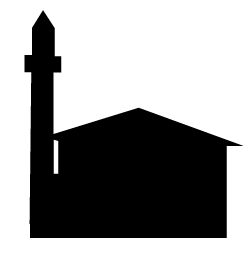Goginauri
Goginauri Mosque
Goginauri is likely the oldest surviving mosque in landslide-prone Shuakhevi. It survived the Soviet period as a warehouse, when its carvings were sealed beneath a thick layer of whitewashing. Its octagonal ceiling inset with a carved medallion (instead of a dome) and traditional incised (instead of applied) woodcarving mark it as an older, Ottoman era mosque. Carvings on the lintel above the entrance identify the craftsman as Zaade Mullah Mohamed Ibn Abdullah and establish the building’s date. A tulip motif dominates the interior woodwork, adorning the door, doorframe, minbar, and cornices along the mezzanine balcony. An exceptionally tall latticework crown atop the minbar —more reminiscent of local carving traditions than Islamic art—reaches well into the mezzanine level. The hooked columns also reflect regional influence with patterns of knots, vines, chevrons, and interlocking medallions. One column, however, features the unusual motif of an ewer (a vessel used for ritual ablutions). In 2016, the village lined the interior with new wood paneling and the ceiling with vinyl sheeting. Although the panels were arranged to leave the mosque’s most significant decorative elements visible, gaps on the mihrab wall revealing even more tulip motifs suggest that additional carvings are hidden beneath.
DISTRICT: Shuakhevi
LOCATION: 41°34’34.1”N 42°15’11.4”E
POPULATION: 251
CONSTRUCTION DATE: 1843 (hijri 1259)
RENOVATION DATE(S): 1990s; 2016
CRAFTSMEN: Zaade Mullah Mohamed Ibn Addullah
MINARET: No
